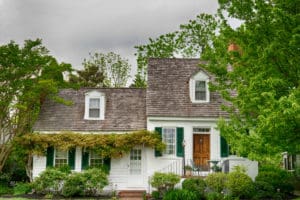A historic home carries its stories and illustrates design styles from generations in the past. Homeowners in designated districts or those whose homes otherwise qualify for historic preservation status enjoy being an enduring part of the heritage of their communities. However, historic designations come with many rules and regulations that impact homeowners, particularly when it comes to renovations and remodels.
Five things to consider when owning a historic home:
 Educate yourself on the regulations in your area. Every municipal planning department has its own unique set of rules and regulations regarding historic preservation. In some cases, laws may be very restrictive and require the home to appear as when built initially–down to specific paint colors and molding. In other cases, the homeowner may have much more latitude for alterations but be restricted in situations of altering windows, doors, and porches.
Educate yourself on the regulations in your area. Every municipal planning department has its own unique set of rules and regulations regarding historic preservation. In some cases, laws may be very restrictive and require the home to appear as when built initially–down to specific paint colors and molding. In other cases, the homeowner may have much more latitude for alterations but be restricted in situations of altering windows, doors, and porches.- Be prepared to make repairs. Since historic homes are, by definition, older structures, they frequently require more repairs and ongoing maintenance than other houses. Before purchasing a home, the buyer should have an experienced inspector check the home carefully, with a good eye for identifying lead pipes, hazardous electrical wiring, moisture and rot, faulty foundations, and other hard-to-see issues.
- Use contractors who specialize in historic homes. Once you decide your home requires repairs, or it’s time for renovations, seek services from contractors who understand the complexities of historic homes. These contractors will know how to manage hurdles to obtain approvals and permits for historic homes. They will also know where to purchase building materials that represent your home’s time period.
- Modernize with patience (and money). Many modern conveniences we take for granted, such as dishwashers, computer stations, entertainment consoles, and even refrigerators, require plumbing and electrical wiring that didn’t exist when the home was built. Adding a sink in a water closet may require more effort than anticipated. Be prepared to rewire the house and set aside extra money for plumbing expenses to get the home functional for modern living.
- Have fun with historical elements. The fun part of living in a historic home is feeling like you are transported into the past. Today, the internet provides shoppers the ability to find just about anything with the click of a button. Install indoor elements such as lighting, doorknobs, clocks, wall switches, and appliances that match the timeframe of your home.
If you’re considering buying a home with a historic designation, get the information you need about codes and requirements from the experts at Richard Stevens & Associates.
At Richard Stevens & Associates, we specialize in assisting our clients to obtain rural and urban land use permits. We understand the building codes and zoning regulations of all counties and cities in Southern Oregon and beyond. We can help you understand how local zoning codes and specialty designations impact your current or potential property. Contact us today for more information.

